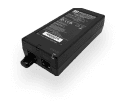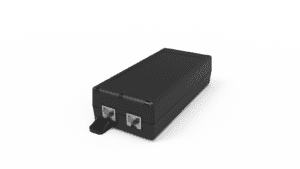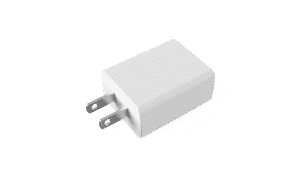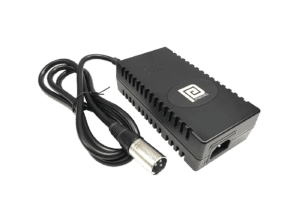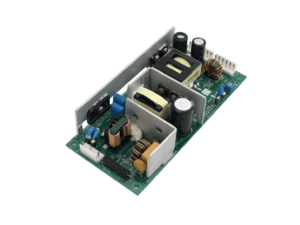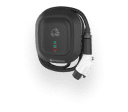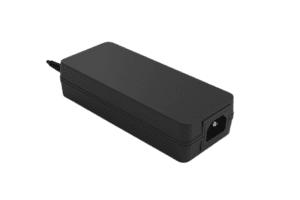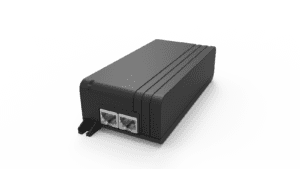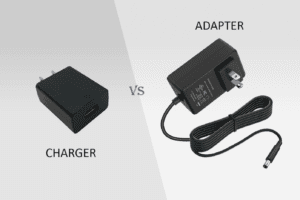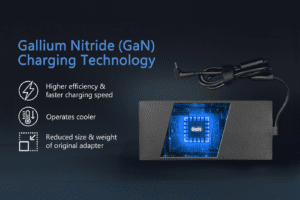BLOG
Custom Power Supply Manufacturer for IoT Devices | Certified, Flexible Solutions for OEMs
Table of contents

As more industries adopt connected devices—from smart homes and industrial automation to healthcare and asset tracking—the demand for efficient, application-specific power supplies is skyrocketing. For OEMs, finding a reliable custom power supply manufacturer is one of the most important steps in bringing an IoT product to market.
IoT devices are unique. They often run on low power, require ultra-compact designs, and need to comply with a range of global safety and energy regulations. Off-the-shelf power supplies may work in a prototype, but they rarely offer the optimization, efficiency, or longevity needed for real-world deployment. That’s where custom solutions come in.
This guide explores how to choose the right custom power supply manufacturer for IoT devices, what to look for in a partner, and how to ensure your product performs at its best—everywhere it’s used.
Why Custom Power Supplies Are the Best Fit for IoT Devices
IoT devices aren’t one-size-fits-all, and neither are their power needs. Whether your product is a smart lock, environmental sensor, or industrial gateway, chances are it has very specific voltage, current, and footprint requirements. Custom power supplies allow OEMs to meet those needs precisely—without compromise.IoT devices, encompassing a vast array of applications from smart home appliances to industrial sensors, exhibit a wide range of power requirements. These requirements are not uniform and can vary significantly depending on the specific function and operational context of the device. Factors such as voltage, current, and physical footprint play a crucial role in determining the appropriate power solution.
For instance, a smart lock might require a different power configuration compared to an environmental sensor or an industrial gateway. This diversity in power needs necessitates a flexible and adaptable approach to power supply design. Custom power supplies offer a solution to this challenge by enabling OEMs to tailor the power delivery precisely to the unique demands of their specific IoT device. This bespoke approach eliminates the compromises inherent in off-the-shelf solutions and ensures that the power supply aligns perfectly with the operational parameters of the device, optimizing performance and efficiency.
Why IoT Devices Require Custom Power
- Space-constrained designs demand ultra-compact power modules
- Low standby power is critical for battery-powered and wireless systems
- Certain applications require isolation, low EMI, or high efficiency at low loads
- Global compliance needs vary by region and product category
Best Practices for OEMs
- Begin power planning early in product development
- Choose a manufacturer experienced with compact, efficient power design
- Evaluate both hardware and certification requirements during vendor selection
By aligning your power supply design with your device architecture, you’ll improve reliability, extend product life, and accelerate your time to market.
What to Look for in a Custom Power Supply Manufacturer
Not all power supply manufacturers are equipped to handle the unique demands of IoT applications. The right partner will offer more than just technical specs—they’ll bring engineering support, certification expertise, and the ability to scale with your production.When selecting a power supply manufacturer for your IoT devices, it’s crucial to remember that not all manufacturers possess the capabilities to meet the specific requirements of these applications. The ideal partner will offer more than just a list of technical specifications.
They will provide comprehensive engineering support, assisting you in designing and integrating the power supply seamlessly into your IoT device. They will also possess expertise in navigating the complexities of certifications, ensuring your product complies with all relevant industry standards and regulations. Furthermore, they will have the capacity to scale their production in line with your business growth, ensuring a consistent and reliable supply of power solutions as your product demand increases. By partnering with a manufacturer that offers this holistic approach, you can optimize the performance, reliability, and compliance of your IoT devices, while also streamlining your development and production processes.
Key Capabilities to Prioritize
- Experience with low-power, embedded systems across various IoT industries
- In-house design and prototyping for fast iteration
- Familiarity with global compliance standards (UL, CE, FCC, DOE VI, etc.)
- Supply chain readiness for small and large batch production
Best Practices for Vetting Manufacturers
- Ask for past work examples or references in your industry
- Review how they handle regulatory documentation and safety testing
- Confirm whether they offer post-deployment support and lifecycle management
The right manufacturer should feel like an extension of your product team—collaborative, transparent, and focused on getting it right the first time.
How Custom Power Supplies Improve IoT Device Performance
Every watt counts in IoT. From preserving battery life to minimizing heat and maximizing uptime, power efficiency is a direct contributor to performance. A custom power supply can be tuned to do exactly what your device needs—and nothing more.In the realm of IoT, where countless interconnected devices operate tirelessly, the significance of power efficiency cannot be overstated. Every watt consumed directly impacts the device’s performance and longevity. From extending battery life in portable devices to reducing heat dissipation and ensuring maximum uptime, power efficiency is a critical factor that influences the overall effectiveness of IoT solutions.
While off-the-shelf power supplies may offer a convenient solution, they often come with compromises. These generic power supplies are designed to cater to a broad range of devices and may not be optimized for the specific requirements of a particular IoT application. This can lead to inefficiencies, such as excessive power consumption, unnecessary heat generation, and suboptimal performance.
A custom power supply, on the other hand, can be tailored precisely to meet the unique demands of an IoT device. By carefully selecting components and optimizing the power delivery system, a custom power supply can ensure that the device receives the exact amount of power it needs, when it needs it. This level of precision not only maximizes power efficiency but also minimizes waste and enhances the overall performance of the IoT device.
Moreover, a custom power supply can be designed to address specific challenges that may arise in IoT deployments. For instance, in battery-powered IoT devices, a custom power supply can be optimized to extend battery life by minimizing power consumption during idle periods or by implementing intelligent power management techniques. Similarly, in IoT devices that operate in harsh environments, a custom power supply can be designed to withstand extreme temperatures, humidity, or vibrations, ensuring reliable operation under challenging conditions.
By investing in a custom power supply, IoT device manufacturers can unlock a range of benefits, including improved power efficiency, enhanced performance, reduced heat dissipation, extended battery life, and increased reliability. These advantages can translate into significant cost savings, improved user experience, and a competitive edge in the market.
Performance Benefits of Tailored Power
- Voltage and current output match the load profile of your device
- Better thermal control reduces overheating and failure rates
- Low noise and ripple enhance stability in sensor-based systems
- Efficient designs reduce overall power draw and extend battery runtime
Best Practices for Improving Performance
- Work closely with your supplier during the design phase
- Simulate real-world usage to validate power needs before final production
- Optimize for both typical and peak load scenarios
In the IoT world, power supply design isn’t just about delivering electricity—it’s about delivering reliability, consistency, and long-term device success.
CLIENT'S QUOTE
"Phihong’s PoE solutions have made a huge difference for us! Our network runs more efficiently, and we’ve seen real cost savings. We couldn’t be happier!"
Compliance and Certification: Why They Matter for IoT Power Supplies
When it comes to connected devices, compliance isn’t just a nice-to-have—it’s a requirement. Whether you’re selling into North America, Europe, or Asia, your power supply must meet strict safety, energy efficiency, and environmental regulations.Compliance is a critical factor in the development and distribution of connected devices. It’s not merely a recommended practice, but a mandatory requirement to ensure the safety and efficiency of these devices. This is especially true when considering the global marketplace, where regulations can vary significantly.
For instance, if you’re planning to sell your product in North America, it must comply with a set of standards and regulations established by organizations like the Federal Communications Commission (FCC) and Underwriters Laboratories (UL). These regulations cover a wide range of aspects, including electromagnetic interference (EMI), safety standards, and energy efficiency.
Similarly, if you’re targeting the European market, your device must adhere to the regulations set by the European Union, such as the CE marking and RoHS (Restriction of Hazardous Substances) directive. These regulations ensure that the product meets the necessary safety, health, and environmental standards.
In Asia, the regulatory landscape is even more diverse, with each country having its own set of standards and requirements. For example, in China, products must comply with the CCC (China Compulsory Certification) mark, while in Japan, they need to meet the PSE (Product Safety Electrical Appliance & Materials) mark.
Therefore, to successfully navigate the global market, it’s essential to have a thorough understanding of the regulatory requirements in each region and ensure that your power supply meets or exceeds these standards. Failure to comply can result in hefty fines, product recalls, and damage to your company’s reputation.
Common Certifications for IoT Power Supplies
- UL and CE: Ensure electrical safety and proper product labeling
- FCC and EMC: Verify that devices don’t cause interference with wireless signals
- DOE Level VI and Energy Star: Mandate minimum energy efficiency for external power supplies
- RoHS and REACH: Ensure restricted substances are not used in materials or coatings
Best Practices for Ensuring Compliance
- Choose a manufacturer that can provide valid, up-to-date documentation for all applicable markets
- Make sure they test for EMI, voltage tolerance, and leakage current
- Ensure certification is built into the design—not added last-minute
Working with a manufacturer that understands regional and industry-specific requirements helps you avoid delays and ensures your IoT device is market-ready from day one.
Why OEMs Trust Phihong for Custom IoT Power Supply Solutions
Phihong has been serving OEMs across the globe for more than 50 years, offering reliable and certified custom power supplies designed for connected devices. From low-power IoT wearables to industrial edge gateways, Phihong provides power solutions that are compact, efficient, and ready for global deployment.
What Sets Phihong Apart
- Deep experience in custom power design for IoT and embedded systems
- Compliance expertise across UL, CE, FCC, RoHS, and more
- Scalable production capabilities in Vietnam and other strategic locations
- Support for PoE, programmable supplies, GaN, and advanced energy management
Whether you’re prototyping a new smart device or ramping up for mass production, Phihong helps OEMs deliver reliable, efficient power—backed by expert support and a strong supply chain.
How to Get Started with a Custom Power Supply Partner
Starting the process doesn’t have to be overwhelming. The right manufacturer will walk you through your device’s power profile, ask smart questions, and help refine your requirements early in development.
Key Steps to Begin the Process
- Share your device’s power load, size constraints, and certification needs
- Request samples or design concepts based on your spec sheet
- Align your internal product timeline with your vendor’s prototyping schedule
Best Practices for Smooth Collaboration
- Involve your power supply partner early in the hardware design cycle
- Be clear about production goals—small runs, regional launches, or long-term scaling
- Prioritize communication: great design happens when both sides are aligned
By starting early and choosing the right manufacturer, you can avoid rework, cut costs, and bring a better IoT product to market faster.

Contact Our Team Today!
Our dedicated sales team and international partners are prepared to support you with your latest projects and initiatives globally.
Explore More with Phihong USA
As we conclude our exploration of PoE technology, it’s evident how these innovations are streamlining power and data integration across various industries. Phihong USA stands at the forefront of this technological advancement, offering a diverse range of power solutions designed to meet the evolving needs of modern industries.
Phihong USA’s extensive product lineup includes:
- Power over Ethernet (PoE) Solutions: Delivering reliable power and data transmission over a single cable, ideal for simplifying network installations and reducing costs.
- AC/DC Adapters and Power Supplies: From compact adapters to industrial-grade power supplies, Phihong provides solutions that ensure efficiency and reliability in various applications.
- Battery Chargers: Customizable chargers for lithium-ion and lead-acid batteries, supporting a wide range of power requirements for mobility and industrial applications.
- Medical Power Supplies: Specialized power solutions designed to meet the stringent requirements of the healthcare industry, ensuring safety and reliability.
Phihong USA is committed to innovation and excellence, continually developing products that meet the highest standards of performance and reliability. Their global reach and dedication to customer support make them a trusted partner in powering the future.
Here are some useful links to explore Phihong USA’s offerings further and bring in new potential clients:
Visit Phihong USA to discover how their advanced power solutions can support your business needs. Whether you’re looking to upgrade your network, or find reliable power supplies, Phihong USA has you covered.
By choosing Phihong USA, you’re partnering with a leader in power technology, ensuring your operations run smoothly and efficiently with top-tier power solutions. Contact Us today!
FAQ
What makes a power supply “custom” for IoT devices?
A custom power supply is one that’s designed specifically for the power requirements of your IoT device, rather than using a generic, off-the-shelf solution. Most IoT devices are compact, energy-sensitive, and built for a very specific use case, so a custom design ensures the supply fits physically, meets the right voltage and current specs, and stays within thermal limits.
Custom power supplies also give you more control over certifications and compliance. For example, if you’re selling a smart wearable into Europe, your supply will need CE marking and RoHS compliance. With a custom design, the manufacturer can build those requirements into the design from the beginning—saving you time and certification costs later on.
Customization can also help your product perform better. Matching the power profile to your device means better battery life, less heat, and a longer product lifespan. This is especially important in applications where devices are in the field for years with minimal maintenance.
For OEMs, a custom power supply is not about bells and whistles—it’s about getting exactly what your product needs, with no unnecessary overhead. It’s a smarter, more efficient way to power your innovation.
How do I know if my IoT device needs a custom power supply?
If your IoT device has strict size constraints, unique power demands, or is designed for regulated environments (like medical or industrial use), then you’re likely a candidate for a custom power supply. Here are a few questions to help you decide:
- Does your device run on battery or require low standby power?
- Are you working in a compact enclosure where thermal performance is critical?
- Does your product need to meet UL, CE, or FCC standards?
- Are you using features like PoE, wireless charging, or programmable voltage?
If you answered “yes” to any of the above, a custom power supply is worth considering. Off-the-shelf units might be easier to source, but they can lead to mismatches in power delivery, reduced efficiency, or overheating—especially in tightly integrated systems.
A good custom power supply partner will help evaluate your application and determine whether custom design is necessary—or whether a semi-custom or modified standard unit might do the trick. Either way, the goal is to make sure your product performs reliably, efficiently, and safely in the real world.
What certifications are most important for IoT power supplies?
IoT power supplies may need to meet a variety of certifications depending on where they’re sold and how they’re used. Here are the most common:
- UL: Required in the U.S. to ensure electrical safety.
- CE: Required for sale in the EU, ensuring product safety, health, and environmental protection.
- FCC: Required in the U.S. to manage electromagnetic interference.
- RoHS: Restricts hazardous substances in electrical components.
- DOE Level VI / Energy Star: Mandates minimum efficiency levels for external power supplies.
For some markets, additional certifications like PSE (Japan), RCM (Australia), or CCC (China) may be necessary.
Medical and industrial IoT devices may need specialized certifications such as IEC 60601 (medical) or IEC 61010 (laboratory and industrial).
The safest path? Work with a manufacturer that understands your market goals and can recommend (and deliver) the certifications needed from day one.
How early should I involve a power supply manufacturer in the product development process?
Ideally, you should engage your power supply manufacturer as early as possible—often at the same time you’re defining your hardware requirements. That’s because power impacts everything from PCB layout and enclosure design to battery life and regulatory compliance.
Waiting until late in the development process can lead to costly redesigns. For instance, if your chosen power supply doesn’t fit the enclosure, or doesn’t meet EMI standards, you’ll need to go back and adjust other parts of the system—costing time and money.
Involving your power partner early helps you avoid these issues and allows you to co-develop a solution that works with your product’s full stack. They can also help you plan for testing, certification, and even production scaling—all before your prototype is finalized.
Ultimately, an early partnership means fewer surprises, better integration, and a smoother path to launch.
Why do OEMs choose Phihong for custom IoT power supplies?
OEMs choose Phihong because we understand that no two IoT devices are the same. We’ve spent decades building power supplies for some of the most innovative and demanding industries—from smart security and healthcare wearables to factory automation and energy monitoring.
Phihong combines deep technical expertise with a global production footprint. We support everything from small prototype runs to full-volume production, with facilities in Vietnam and other regions to support delivery and cost-efficiency.
We don’t just ship boxes—we collaborate. Our engineers help OEMs define power needs, test for compliance, and optimize for real-world conditions. Whether it’s building to UL or CE standards, integrating PoE, or ensuring long battery life, we focus on solving your power challenges before they become problems.
That’s why OEMs trust Phihong—not just for power supplies, but for powering what’s next.


